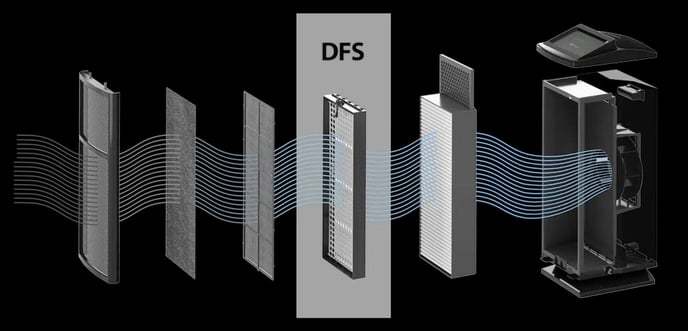Most air purifiers are designed to meet the HEPA, or High-Efficiency Particulate Air, standards. This means that they effectively remove 99.97% of airborne particles at 0.3µm in size. The HEPA filter is a mesh-like sheet of dense interwoven synthetic or glass fibers. As air passes through the filter, large particles get trapped, but anything smaller than 0.3µm can get through and be released back out into the air you’re breathing.
Many of the most harmful particles, including bacteria, allergens, chemicals, and viruses are smaller than 0.3µm. That’s why at Intellipure®, we created our patented DFS technology to efficiently remove 99.99% of harmful airborne particles at 0.007 µm in size. The DFS high energy field creates a self-contained, highly energized state in the main filter that clusters ultrafine particles to make them larger, allowing the main filter to effectively capture ultrafine particles. The DFS continually creates high-energy exposure through the pleats and fibers of the main filter. This prevents organism growth in the main filter and prevents live organisms from escaping back into the air.
Learn more about what sets us apart from the rest or contact us to start your clean air journey.
How does DFS work?
- The DFS high energy field creates a self‐contained, highly energized state in the main filter that clusters ultrafine particles to make them larger, allowing the main filter to effectively capture ultrafine particles.
- The DFS continually creates high energy exposure through the pleats and fibers of the main filter. This prevents organism growth in the main filter and prevents live organisms from escaping back into the air.

Read our recent article on the differences between HEPA, ULPA and DFS.

